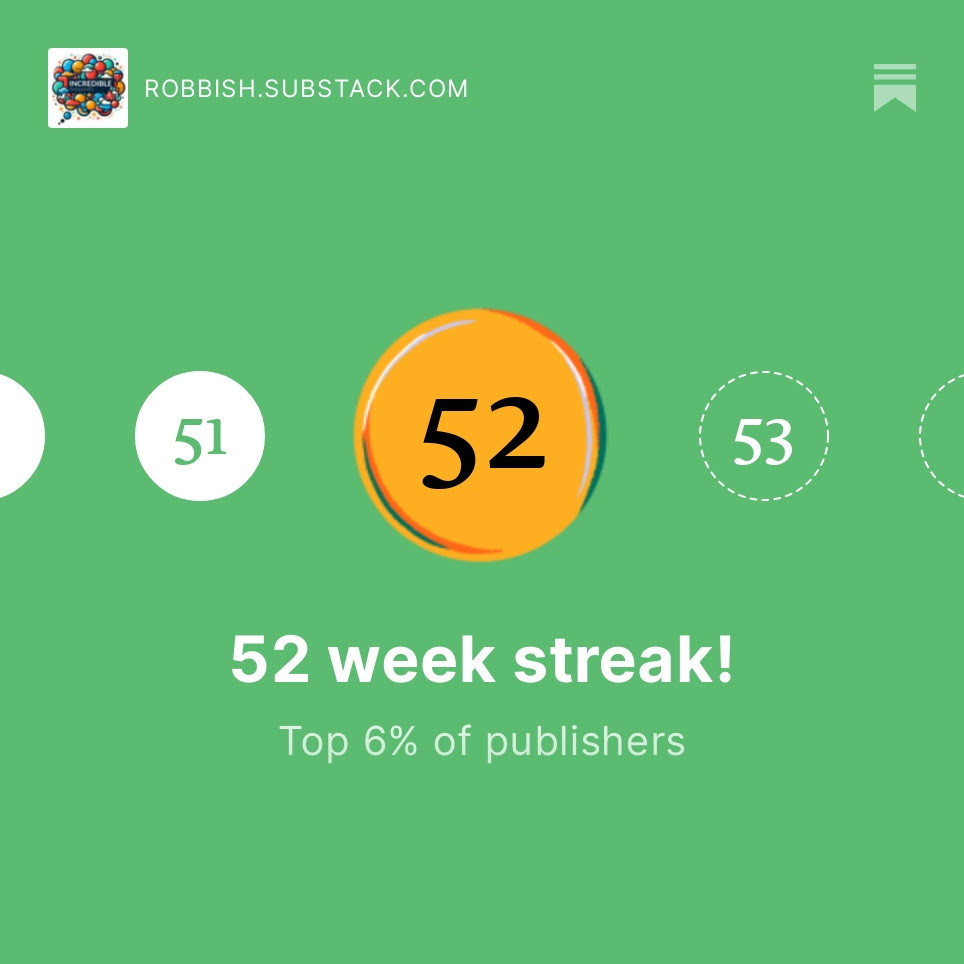First of the new year, and a bonus week’s edition given I have now survived the 2024 weekly writing mission. I’ll probably change the format in terms of regularity - if there is stuff that comes up that I think is worth writing about then I will, but I’d guess it won’t remain weekly.
🗳️ 🏛️ UK Gov wants your feedback on AI and creativity!
📅 🎉 52 weeks done.
UK Gov’s AI & Creative industries consultation
The UK government have launched a consultation around AI vs creatives and how best to regulate the domain. If you are interested in, or work in, either areas then I’d recommend taking a look and submitting your hot-takes. Not to bias anyone, but here are mine:
1. How is it that the government still doesn’t know how to run consultations yet?
I mean come on, these aren’t new things - and there aren’t that many steadfast rules but straight out the gates:
Hmmm - do you agree that we are totes right? Yes?
Ok, I’ll stop being catty - They do go on to present option 3 as their proposed solution in the documentation, so its maybe a bit more legit that I’m portraying. However, they do then ask a more neutral “Which option is best” in the immediately following question, so I still think it could be set out better (lead with neutral and then present the government’s proposed position and ask questions specifically on the gov position). Really this is just the kind of UX/product design skills that I have been arguing are applicable for everyone, regardless of area of work, all year long - e.g. User-Experience isn’t just for apps or websites, pretty much all end-products have some kind of user-experience, Word documents, legal contracts, consultation surveys - they all have “users” and how you build/structure that thing impacts their experience using it (or reading it, or however they interact with it). Ok, rant over, promise.
2. There isn’t a golden bullet - something’s gotta give
It feels like it’s trying to find a perfect solution that will enable both industries to thrive and grow, but I suspect its just not going to be possible. I have written about this before - The genie is out of the bottle and I don’t think there is any going back: there will be a subset of current customers of the creative industry who will stop being customers of the industry and will use AI tools instead.
This isn’t really that new. Free to use images and resources (Unsplash for high quality photos, for example) were already taking a chunk out of the bottom end of the industry. Free to use tools and increasingly smart software tools were doing the same by empowering lots of bootstrapping folks to just DIY it - and I suspect AI tooling will just be an enhancement in that latter category. There will still be customers who need/want creative industries, and I have no doubt those companies that continue serving those will benefit from using the same AI tools internally for efficiencies too.
AI Outputs
This primarily relates to labelling of AI generated works (at least what I have seen so far), which I think is an interesting one to unpack:
I’m not sure every creative output created by AI needs to be labelled, as I suspect AI just becomes another tool. Pre-AI you could get a computer to generate abstract colour patterns, backgrounds, swirls etc. If you hire a creative agency to design an album cover, for example, you probably (eventually) just care about the end product, does it fit your brief etc (although for quoting/charging purposes you might want to know how much is AI to make sure you’re not overcharged) and not exactly which aspects of the work was AI generated (basically I suspect digital art will become composite works of AI generated, regular computer generated, hand created etc). What if AI helps enhance and clean up a photo you took or to remove some unwanted object? Or if AI generated an initial wire-frame idea that you then built into an end product? Or if you created a poster and a background pattern was AI generated? How, if at all, should this be labelled?
The main area of concern for AI labelling is likely for platforms that then distribute or share creative works. Photo realistic output that depicts brands, events or people is clearly the more tricky issue. I suppose a digital watermark is a reasonable solution, because really its going to be down to the platforms that the output is syndicated on to label it properly, so if all AI output had an immutable digital watermark that any and all platforms could use to identify it and then ensure prominent labelling is applied. You thinking what I am? Sounds like we need an AI on the blockchain solution right? …right? Seriously though, I’m not sure its a simple solution (see my above composite work point - how does it work in those scenarios?)
Lots of fun things to think about, so I’d recommend piling in and weighing in..
The Substack stamp of approval
As previously said: pow.




